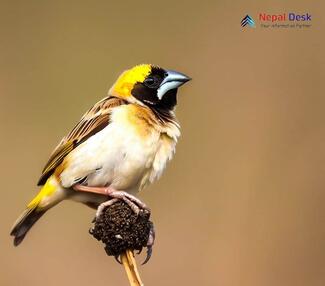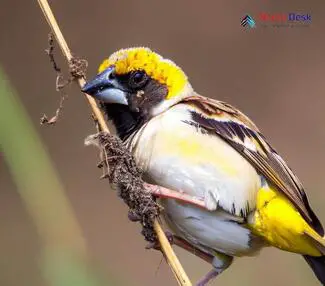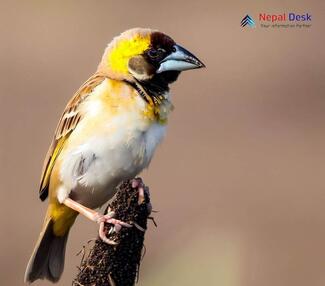The Black-breasted Weaver, scientifically known as Ploceus benghalensis, is a fascinating bird species that has captured the hearts of birdwatchers worldwide. Known for its striking appearance and captivating behavior, this unique weaverbird is predominantly found in the Indian Subcontinent, with some occurrences in Southeast Asia. In this section, we'll take an in-depth look at the Black-breasted Weaver's characteristics, habitat, and more to help you appreciate this awe-inspiring species.
Distinctive Physical Features
The Black-breasted Weaver stands out from its counterparts due to its distinctive plumage. Males exhibit a bright yellow body complemented by a black mask covering their face and throat, as well as extending onto their breasts. This sharp contrast between black and yellow makes the male Black-breasted Weaver truly eye-catching. Females, on the other hand, are noticeably more subdued in color, featuring a dull yellowish-brown body devoid of any black markings.
Habitat and Distribution
The preferred habitat of the Black-breasted Weaver is generally wetlands, marshes, and areas near water bodies such as rivers or lakes. They have a predilection for tall grasses and reeds that provide adequate cover while constructing their nests. The species is primarily distributed across India, Bangladesh, Nepal, Bhutan, Myanmar, and sometimes even Cambodia and Vietnam.
Remarkable Nesting Behaviour
One of the most intriguing aspects of the Black-breasted Weaver is its intricate nest-building abilities. Male weavers are known to construct elaborate nests by intricately weaving together grass blades or reeds. These nests are typically suspended from tall grasses or bushes above water bodies or marshy areas. The complex structure incorporates a central breeding chamber with an entrance tunnel leading into it.
It's worth noting that male Black-breasted Weavers are polygamous, and part of their courtship involves demonstrating their nest-building expertise to attract females. If impressed, a female will lay her eggs in the nest, leaving the male to continue his search for more mates and construct additional nests.
Diet and Feeding Habits
Black-breasted Weavers primarily feed on insects such as grasshoppers, beetles, and bugs. They also consume seeds as part of their diet. Their foraging strategy involves pursuing insects aerially or skimming through the water surfaces to catch their prey with their pointed beaks.
Conservation Status
Currently, the Black-breasted Weaver is listed as a species of Least Concern on the IUCN Red List. Although facing some habitat challenges due to agricultural expansion and wetland degradation, the population of this weaverbird is considered to be stable for now. Conservation efforts are essential to ensure that this beautiful bird species continue thriving in its native habitats.
To Sum Up
For avian enthusiasts, the sight of a male Black-breasted Weaver flaunting its vibrant plumage while fluttering around its meticulously crafted nest is an unforgettable experience. Next time you embark on birdwatching escapades across Indian Subcontinent wetlands, be sure to keep an eye out for this marvelous species — it's undoubtedly worth your admiration.




